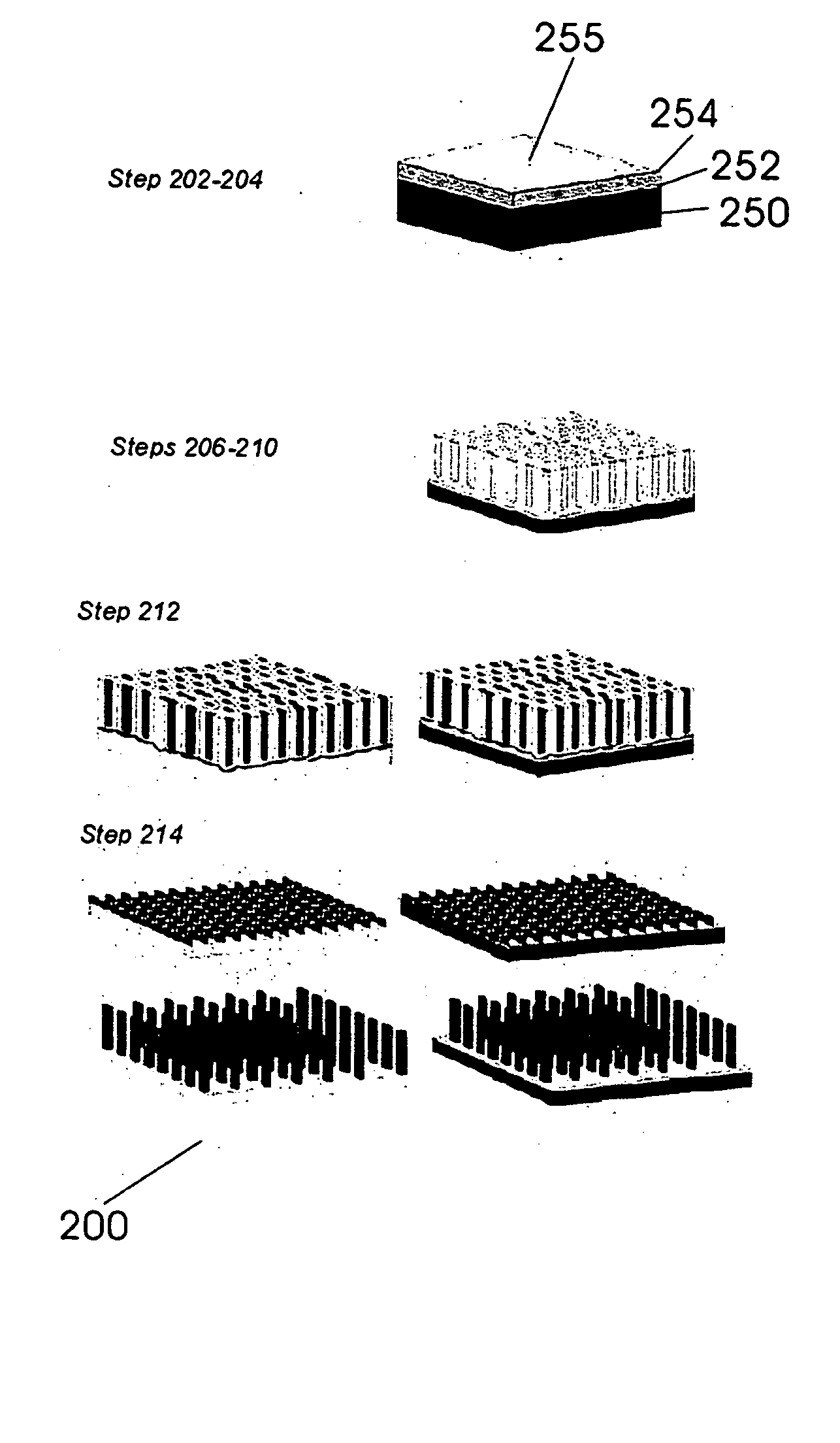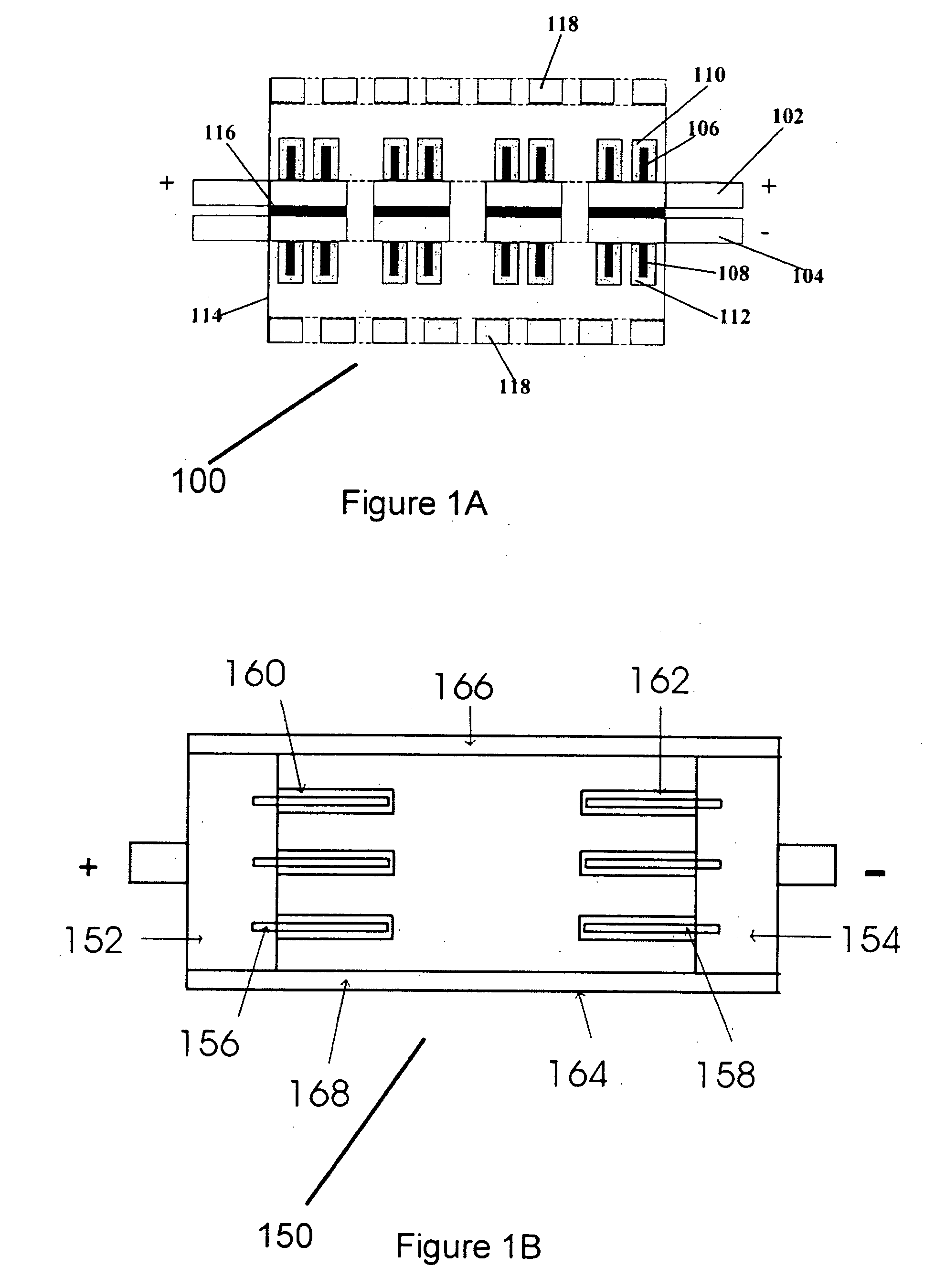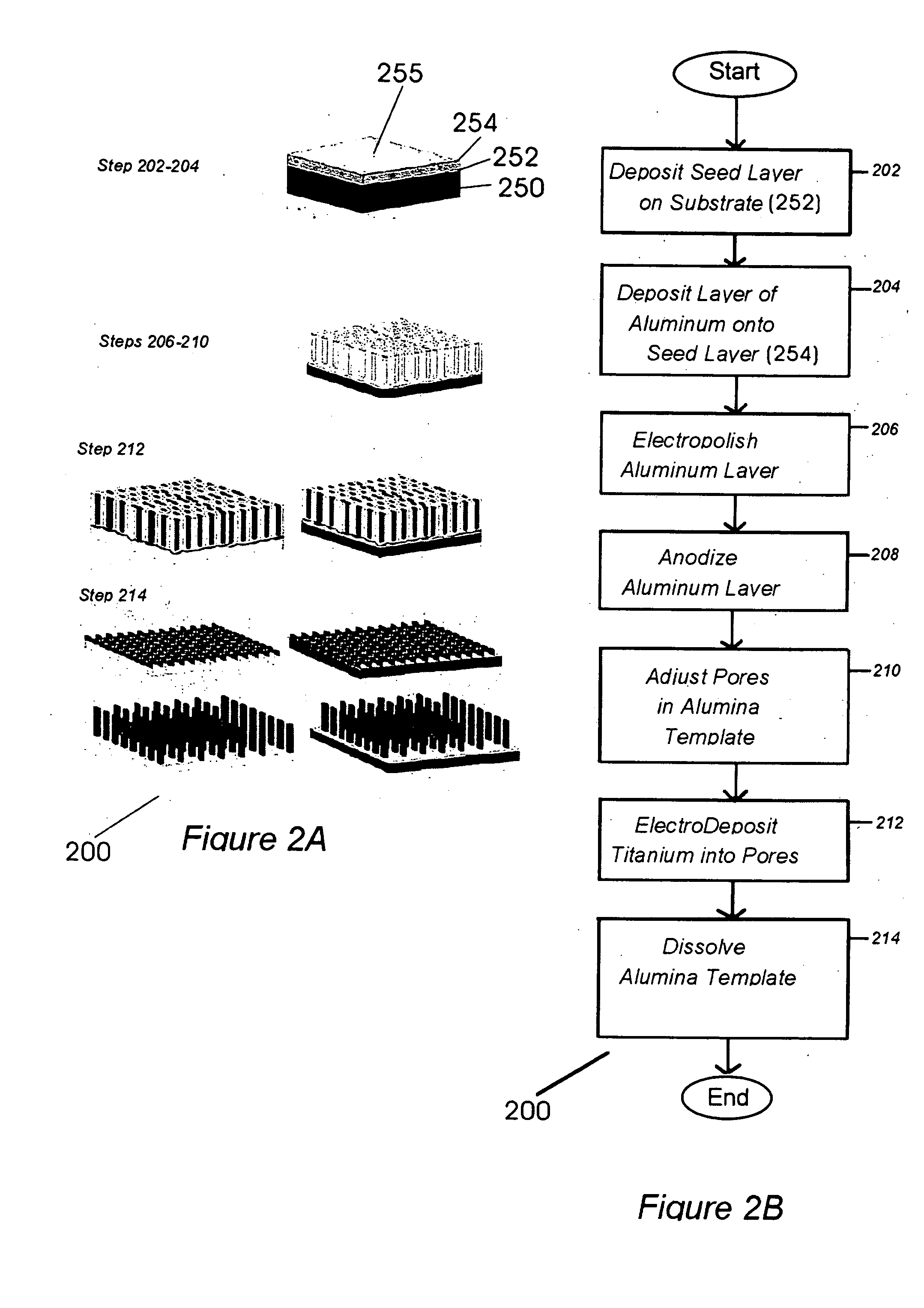Implantable biofuel cell system based on nanostructures
a biofuel cell and nanostructure technology, applied in the direction of indirect fuel cells, non-aqueous electrolyte cells, cell components, etc., can solve the problems of defective sinoatrial nodes, inability to maintain a regular heartbeat, and devices that are too large to be implanted inside the human body, and achieve the effect of high power
- Summary
- Abstract
- Description
- Claims
- Application Information
AI Technical Summary
Benefits of technology
Problems solved by technology
Method used
Image
Examples
Embodiment Construction
[0051] The following exemplary discussion focuses on a bio-implantable electrochemical cell system for providing high power for active implantable medical devices. The apparatus of the present invention provides an order of magnitude improvement in power density (1,000 to 10,000 μW cm−2) over existing glucose / oxygen fuel cells, with a total output power of 1,000 to 10,000 μW.
[0052] Referring to FIG. 1A, a first configuration of a single electrochemical cell 100 constructed in accordance with the principles of the present invention, is shown. Electrochemical cell 100 comprises an anode 102 and a cathode 104, both including arrays of nanostructured rods 106 and 108 in their respective interior portions. Immobile enzyme layers 110 and 112 are deposited on the interior surfaces of anode 102 and cathode 104, respectively, including on the arrays of nanostructured rods 106 and 108. Immobile enzyme layer 110 comprises glucose oxidase and is deposited on the interior surface and nanostruct...
PUM
 Login to View More
Login to View More Abstract
Description
Claims
Application Information
 Login to View More
Login to View More - R&D
- Intellectual Property
- Life Sciences
- Materials
- Tech Scout
- Unparalleled Data Quality
- Higher Quality Content
- 60% Fewer Hallucinations
Browse by: Latest US Patents, China's latest patents, Technical Efficacy Thesaurus, Application Domain, Technology Topic, Popular Technical Reports.
© 2025 PatSnap. All rights reserved.Legal|Privacy policy|Modern Slavery Act Transparency Statement|Sitemap|About US| Contact US: help@patsnap.com



